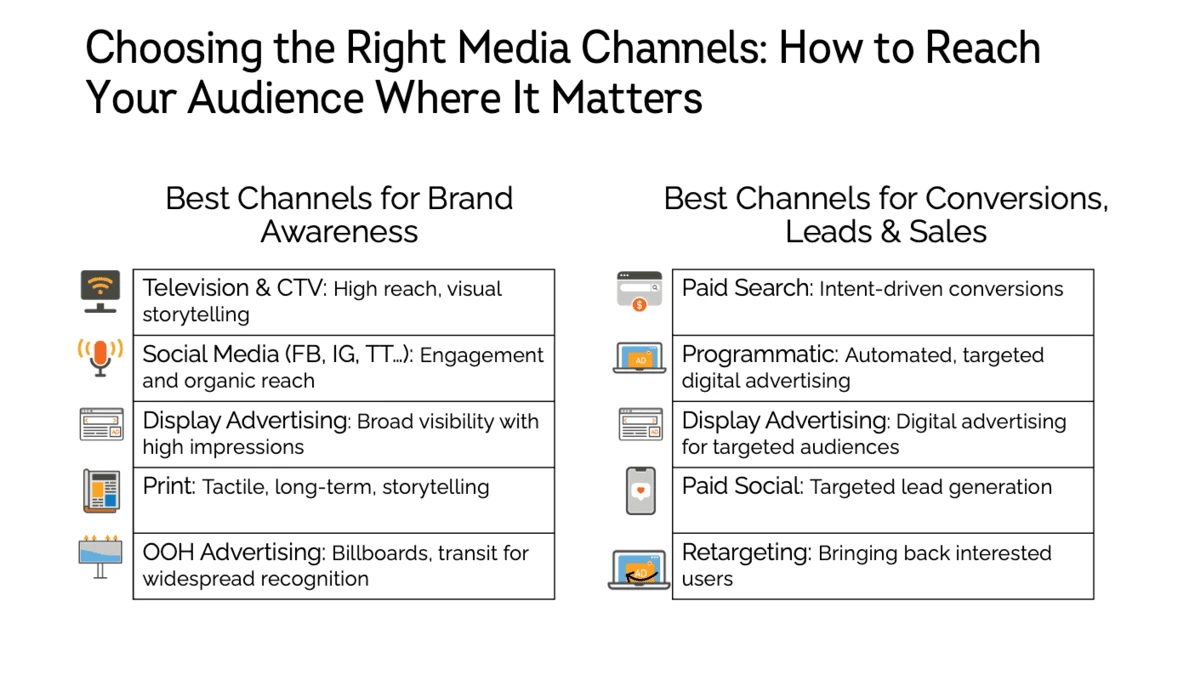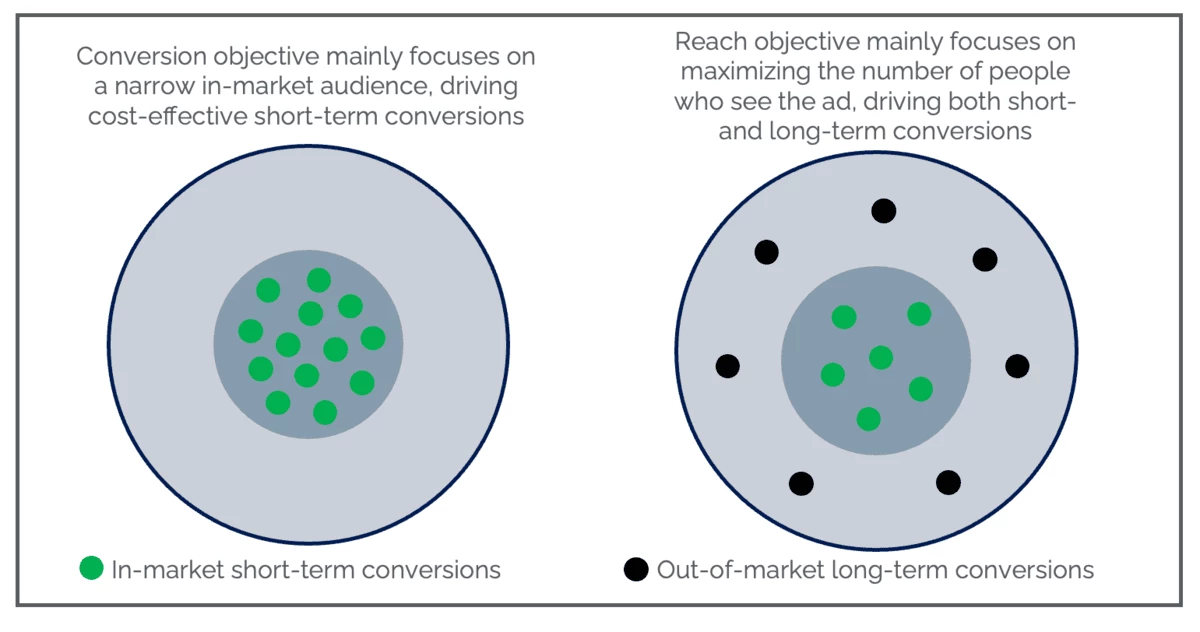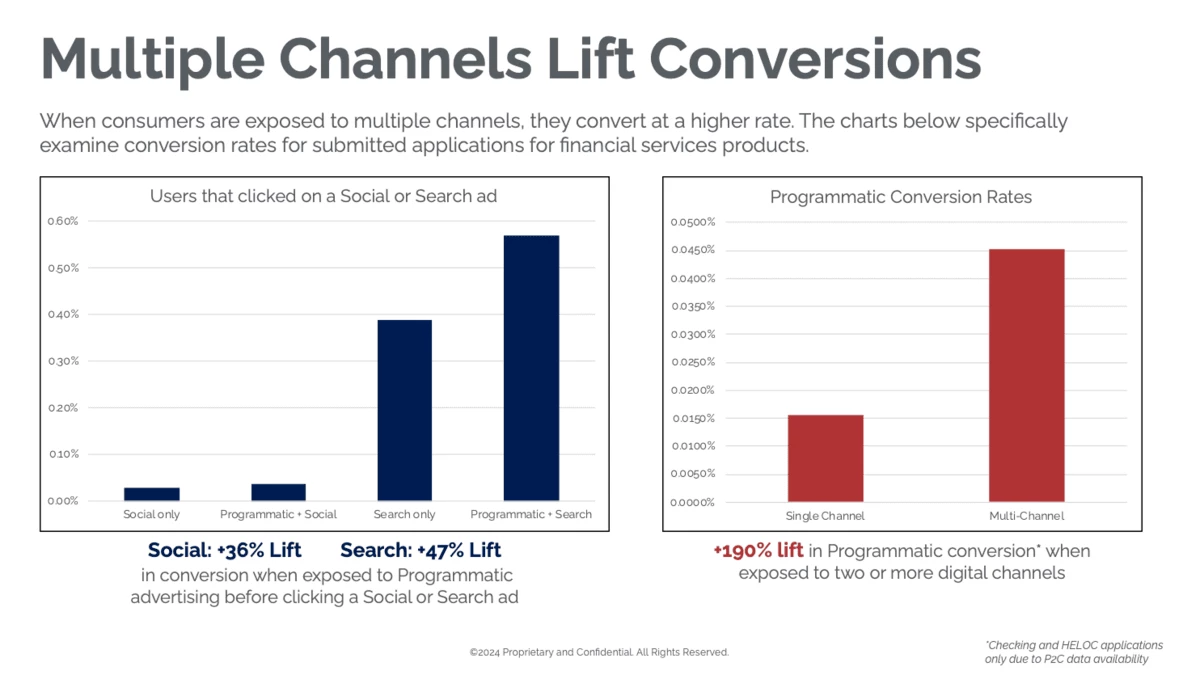Balancing Brand and Performance Advertising for Effective Media Buying
As a marketer, you’re often in the position of ‘selling’ your marketing strategies to leadership. Though they may be aware of brand and performance terminologies, they may not be clear on the differences or benefits that both provide to reach their marketing goals.
With marketing budgets stretched, you may also need to utilize the most efficient and optimized strategy to stretch your advertising dollars and achieve your goals. When sharing your strategy with stakeholders, consider the following points:
- Brand Advertising: Emphasize that brand advertising focuses on long-term growth by building brand equity and awareness, leading to sustained customer loyalty and market presence.
- Performance Advertising: Ensure they understand that performance advertising aims for quick, measurable results, directly affecting sales and revenue in the short term.
- Full Funnel Approach: Explain that combining both strategies can optimize overall marketing effectiveness, balancing short-term gains with long-term brand development.
What many may not understand is the difference between reaching brand goals and reaching performance goals. Brand awareness campaigns lean into high-level, broad messaging, tagline-focused, and often tell a story. While performance advertising focuses on specific products, services or offers with a specific advertising goal and a strong call to action.
Ideally, your media buying strategy includes both, but they do not necessarily look the same from a creative or channel perspective.
The best approach to creating an optimized media plan is to start with a clear understanding of your audience, goals, and budget. Your plan can only be expertly designed with the right channels, reaching the right audience at the right time.
Best Media Channels for Advertising
Media placement considerations for brand advertising include a strong focus on upper-funnel channels: TV, radio (traditional and streaming), print, OOH, and sponsorships to build awareness and clarify your positioning. Lower-funnel channels like display, social, and paid search can be used for additional touchpoints, engagement opportunities, and to capture users interested in learning more about your brand.
To reach performance advertising or direct response marketing goals, your media plan should ideally start with maxing out your search advertising. People are actively searching for your product or service in the consideration phase, where they are solution and brand aware. At this point, they are ready to buy or convert. Make sure you capitalize on these high-intent signals.
Display and paid social should then be added to your media mix for an omnichannel strategy to drive conversion. While fewer people will convert via these channels, they still provide the opportunity to do so and drive consideration that can turn into conversion at a later point. The breadth of reach in this omnichannel approach has been shown to increase conversion rates and event ROAS.
If your budget allows, include upper-funnel channels to build awareness in tandem with performance channels, bringing new potential customers into the funnel and growing your customer base.

Measurable Outcomes in Advertising
Brand awareness and/or recall can often be measured via lift studies conducted with a 3rd party platform. Maximize reach and ensure there is a high enough frequency for the ads to stick and resonate. CPMs should be kept low to stretch budgets as far as possible. Get the greatest impact, in the form of high completion rates, from video and audio channels serving ads primarily in non-skippable inventory. Measurement tactics should use click and high-level conversion metrics (site visits and exploration) to determine what creative, audience targeting, inventory, and other parameters or tests are performing at an optimal level.
The objectives of performance advertising campaigns are best measured by CPA (cost per action), which examines the amount spent on advertising to drive a desired conversion action. ROAS, or return on ad spend, is most easily measured for products and services that can be purchased online, as a specific dollar amount is attached to each transaction, which can be tracked by digital ad platforms.
ROAS can also be measured for conversion actions that don’t have a dollar amount assigned to them (such as a sales lead) if you have a clear sense of what that action is worth to the company.
When integrating brand and performance advertising, specific metrics are used to evaluate success in both types. As mentioned earlier, cost per action can be used to help refine and optimize brand campaigns, as site activity or conversion is a better indicator of what creative, targeting, or other parameters are most effective (instead of using click or completion metrics, which can be heavily influenced by the digital ad placement or inventory).
Media success will vary depending on your goals. Each advertising strategy requires different metrics and evaluation methods.
Brand Marketing KPIs
- Impressions: Number of times your ad is shown
- Reach: Unique viewers exposed to your ad
- Brand Recall: Surveys and lift studies to measure awareness
- Engagement: Shares, likes, comments, video completion rates
- Share of Voice (SOV): Brand’s visibility compared to others
Performance Marketing KPIs
- Click Through Rate (CTR): % of users clicking an ad
- Cost Per Acquisition (CPA): Cost to acquire a customer
- Return on Ad Spend (ROAS): Revenue generated per dollar spent
- Lead Conversion Rate: % of leads turning to customers
- Customer Lifetime Value (LTV): The Total value a customer brings over time
Benefits of Integrating Brand and Performance Advertising
As mentioned previously, there are significant advantages to using a combined brand awareness and performance advertising strategy. In the example below, the green dots represent a tight audience focus to drive conversions, while the circle on the right shows an in-market audience conversion strategy in tandem with a wider reach objective to also maximize the number of people who see the ad.

In a financial services client's case study, we can observe how upper-funnel channels enhance conversion in lower-funnel channel media plans. This demonstrates a successful integration of an omnichannel, full-funnel campaign.

By understanding and articulating the distinctions between brand and performance, marketing professionals can effectively align advertising strategies with overarching business goals, ensuring both immediate returns and long-term success.
Mariana Delgado, Marketing Director at DesignRush, shared, "It's hard to communicate to stakeholders that brand and performance campaigns are not conflicting tactics, but rather complementary ones. For instance, we conducted a brand campaign that focused on trust and category authority while also running performance advertisements... Over the course of six months, the cost per lead dropped by 23%, and direct traffic went up, a lot. This showed that brand effort was changing how consumers searched for and interacted with us later on. You don't have to choose between short-term growth and long-term equity when they are designed to function together. You get both."
When it comes to brand versus performance, there are differences in your goals, creative, messaging, channels, and outcomes. If you’re looking to drive sales with quick, trackable results, performance is your strategy. When you need to build a foundation for your brand, create trust and recognition, focus on brand. However, in an ideal strategy, brand and performance together drive the best business results.






